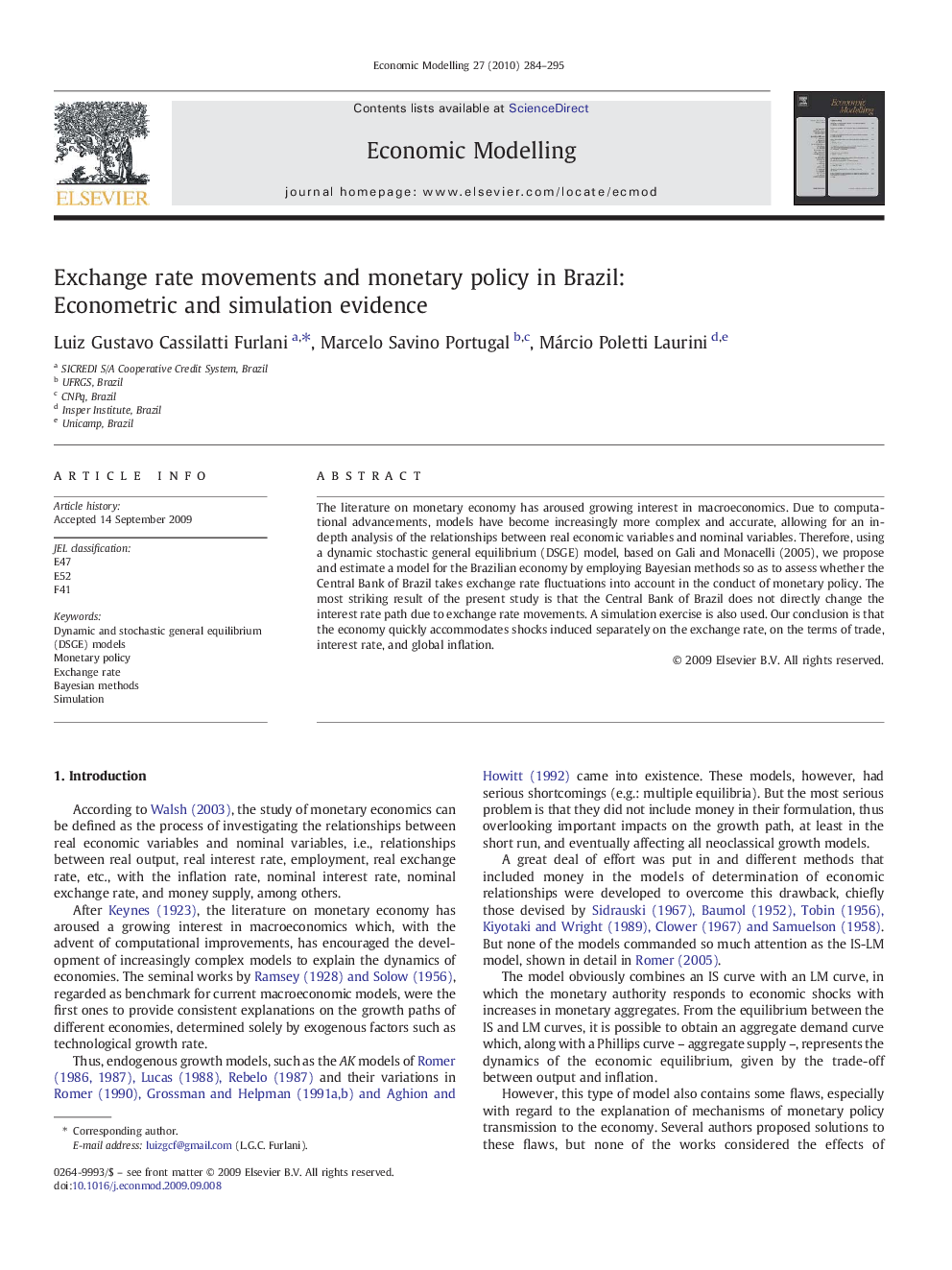| Article ID | Journal | Published Year | Pages | File Type |
|---|---|---|---|---|
| 5055897 | Economic Modelling | 2010 | 12 Pages |
Abstract
The literature on monetary economy has aroused growing interest in macroeconomics. Due to computational advancements, models have become increasingly more complex and accurate, allowing for an in-depth analysis of the relationships between real economic variables and nominal variables. Therefore, using a dynamic stochastic general equilibrium (DSGE) model, based on Gali and Monacelli (2005), we propose and estimate a model for the Brazilian economy by employing Bayesian methods so as to assess whether the Central Bank of Brazil takes exchange rate fluctuations into account in the conduct of monetary policy. The most striking result of the present study is that the Central Bank of Brazil does not directly change the interest rate path due to exchange rate movements. A simulation exercise is also used. Our conclusion is that the economy quickly accommodates shocks induced separately on the exchange rate, on the terms of trade, interest rate, and global inflation.
Related Topics
Social Sciences and Humanities
Economics, Econometrics and Finance
Economics and Econometrics
Authors
Luiz Gustavo Cassilatti Furlani, Marcelo Savino Portugal, Márcio Poletti Laurini,
